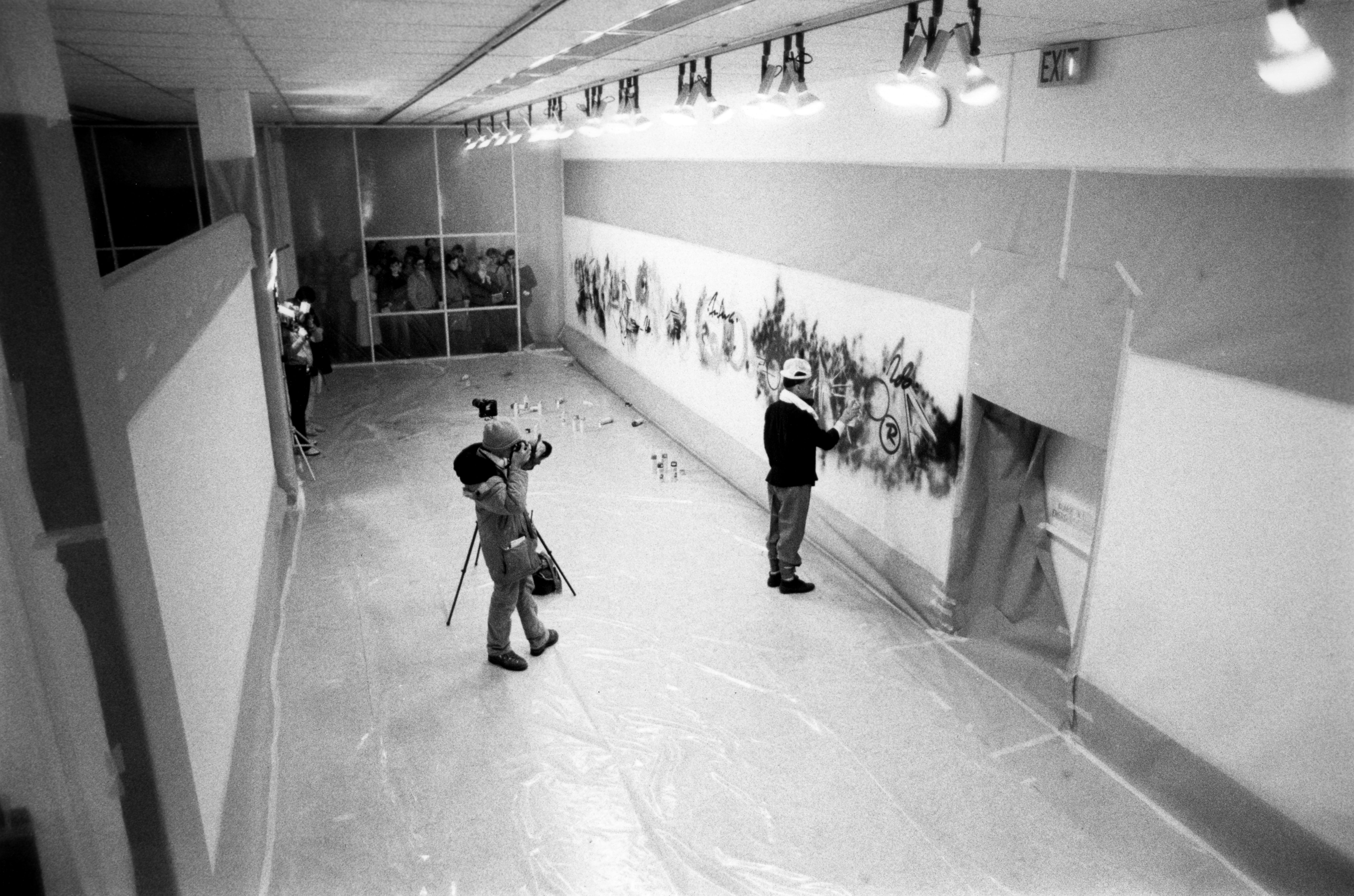
Works like “Untitled” (1984), created by American graffiti artist Futura2000, will be presented at “To Begin, Again,” an exhibition celebrating the prehistory of the Wexner Center for the Arts from 1968-1989. The exhibition will be on view Feb. 5-May 8. Credit: Courtesy of The Ohio State University Archives
This spring semester, the Wexner Center for the Arts will provide community members with events inspired by a prominent jazz artist, Princess Leia and even its own history.
Despite reducing capacity in its Film/Video Theater to 75 percent and live-performance capacities to 50 percent, the Wexner Center has a busy lineup prepared for the next several months, barring pandemic-related changes, Melissa Starker, spokesperson for the center, said. Students can look forward to various happenings, including a film series with a special sound and a book reading in January, preceding a February exhibition showcasing work that has not seen the light of day in 30 years.
Kicking things off for the spring semester is the film series “Soundtrack by Herbie Hancock,” which will pay homage to a jazz legend. The series, which will consist of eight films and run from Friday through Jan. 29, will showcase Hancock’s award-winning soundtracks in films such as “Harlem Nights” and “ ‘Round Midnight.”
“Aside from really great music, it’s a really diverse lineup,” Starker said. “It’s everything from, you know, one of the greatest films ever made about jazz to ‘Death Wish’ — the 1970s action exploitation film that started like this whole revenge genre.”
Not only does the center cater largely to student audiences, but it works hand-in-hand with them as well. A new collaborative effort between the Wexner Center and the student organization Cinéseries has led to the formation of a new monthly program, taking place this month Jan. 19 at 7 p.m. in the Film/Video Theater.
“This month, we’re doing a series called ‘Breakaway Shorts,’ which is five really cool, boundary-pushing shorts that they have curated,” Starker said. “This is a new partnership that we’re pretty excited about.”
Ohio State professor Linda Mizejewski will also grace the Film/Video Theater, catering to “Star Wars” fans with a reading from her book “Our Blessed Rebel Queen: Essays on Carrie Fisher and Princess Leia” Jan. 26 at 5:30 p.m. A book signing and screening of the documentary “Looking for Leia” will follow the reading.
February and Valentine’s Day tend to go hand-in-hand, and the Wexner Center will be practicing self-love next month in the form of a new exhibition, “To Begin, Again: A Prehistory of the Wex, 1968–89,” which will be on view Feb. 5 through May 8. The exhibition will showcase work from artists such as Eva Hesse and Frank Stella and will be a way of recognizing the arts at Ohio State from 1968 onward, before the formation of the Wexner Center in 1989, Starker said.
“There is a contemporary art collection at Ohio State that the Wex has stewarded for 30 years, but a lot of that work has not seen the light of day in that time,” Starker said. “It all is connected to this really interesting period of time in which contemporary art became a new focus at Ohio State.”
Kelly Kivland, chief curator and director of exhibitions for the center, said the show will focus heavily on the University Gallery of Fine Art, which was created in the ‘70s. Kivland said the gallery came about in part because other Big Ten institutions had independent art museums on their campuses and Ohio State did not, but also because of on-campus protests and resulting artwork of the time.
“There were these significant protests that happened here on campus that really brought the university to a standstill in April and May of ’70,” Kivland said. “That was really very much a part of, I would say, the greater ethos to create change on campus and to really give attention to shaping culture and countercultures.”
In addition to showcasing work from Ohio State students, faculty and staff who were interested in making change through art at the time, Kivland said the gallery faced several heavy topics head-on. It hosted several exhibitions in the 1980s that will be shown in the February exhibition and pertained to issues such as the AIDS epidemic and sexual violence.
“This particular exhibition is relevant now as an institution that’s really looking back at and giving attention to what it means to be part of an academic institution,” Kivland said. “Really looking at that foundation of the students and activists that were on campus and how they really pushed for and shaped and inspired so much of the arts.”


